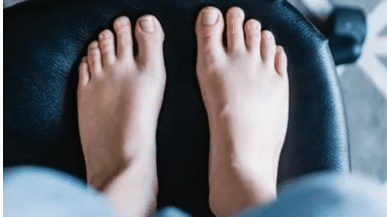COVID toe, a phenomenon
that emerged towards the end of last year as a side-effect of COVID-19, was
unexplained until recently. Scientists have now found an explanation for why some
people who catch a COVID-19 infection can develop what doctors call ‘chilblain-like’
lesions on their toes and fingers. Researchers say they have been able to pinpoint
parts of the immune system that appear to be involved. The findings have been
published in the British Journal of Dermatology.
What is COVID toe?
COVID toe has
largely been observed as a side-effect of COVID-19 infection. Scientists have
found that often COVID toe appears in people who do not develop classic COVID
symptoms such as persistent cough, fever or loss or change in smell or taste.
Also Read | WHO recommends reduced dose of Pfizer’s COVID vaccine for under-12 children
The affected part
of the skin, usually the skin and fingers, can look red or purple. Some people
also report painful raised bumps on certain areas of the skin and pus.
Why does COVID toe
happen?
According to the
latest findings, the cause of COVID toe involves two parts of the immune
system. One, is an antiviral protein called type 1 interferon, and the other is
a type of antibody that mistakenly attacks the person’s own cells and tissues
instead of the invading virus.
Also read | Omicron BA.2 subtype: All you need to know
Further, the cells
lining the small blood vessels supplying the affected areas are also involved,
say researchers based out of the University of Paris.
Also Read | India: 40-day-old baby girl fighting COVID becomes youngest to test positive
Dr Veronique Bataille,
a consultant dermatologist and spokesperson for the British Skin Foundation, told
the BBC that COVID toe was seen very frequently during the early phase of the
pandemic but has declined significantly since the Delta variant started driving
the infection wave.
Also Read | Going to the airport? Domestic passengers can now carry only one handbag
Bataille believes
that higher vaccination numbers could also be a likely reason for the reduction
in reports of COVID toe. She added that since COVID-related skin problems often
appear after the acute infection and in people who have no other symptoms, so
the link with the virus is sometimes not made.







